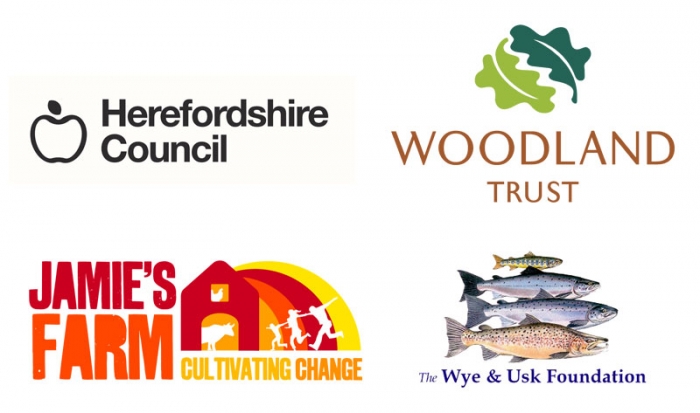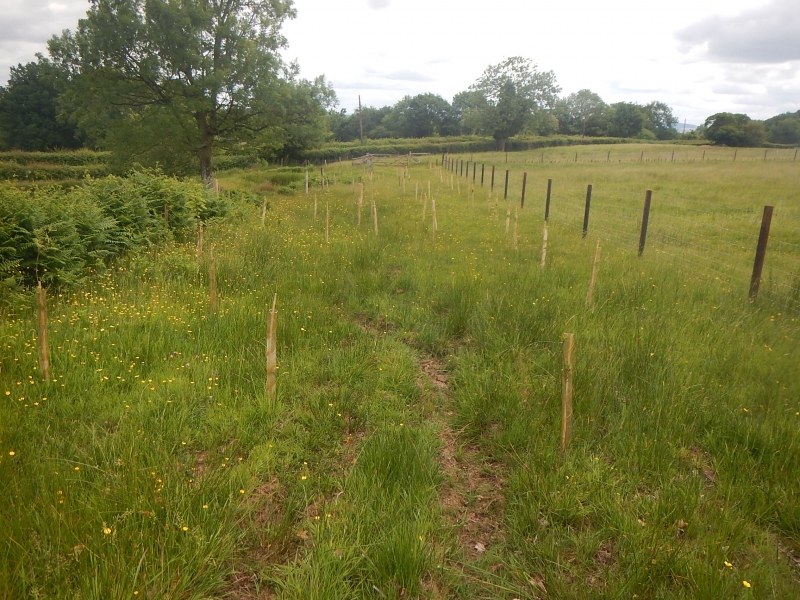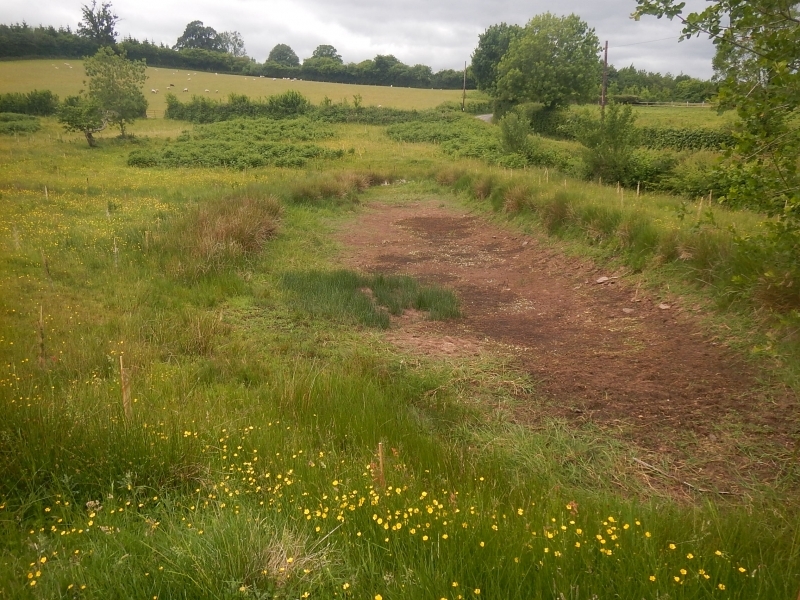Tree planting at Jamie's Farm
The Herefordshire Natural Flood Management (NFM) construction grant scheme aims to reduce flood risk to local communities, as well as improve water quality and enhance biodiversity, using natural flood management processes.
The scheme runs until March 2027 and provides funding to help support landowners and farmers to alter their land and water management practices to slow the flow of water and reduce flood risk to downstream communities.
View the NFM construction grant scheme for more details and eligibility
Tree planting case study
"The area planted with trees will create new wildlife habitat and increase biodiversity."
Mark Carnie, Farm Manager
What are the benefits of tree planting?
With support from the Woodland Trust, the River Wye and Lugg Natural Flood Management (NFM) project has been working with landowners to plant woodland areas. Woodland areas are important as they offer multiple benefits including:
- Flood risk reduction – Trees help reduce flood risk in many ways. They help to reduce the volume of water that reaches the watercourse by up taking water through their roots, intercepting rainfall with their leaves and releasing water back into the atmosphere via transpiration. Trees also help to slow the flow of water reaching the watercourse by increasing the roughness of the ground surface and by their roots increasing soil infiltration rates.
- Reduced soil erosion – Trees help to create a good soil structure which helps to reduce soil erosion and sediment loss.
- Carbon capture– Through the process of photosynthesis, trees take in atmospheric carbon and lock it up within the tree, helping in our efforts to tackle climate change. By reducing soil erosion, trees also help to reduce the amount soil carbon released into the atmosphere, helping tackle climate change.
- Habitat creation – Woodlands create an excellent habitat for many native species of flora and fauna.
- Shelter – Trees can provide important shelter and shade for wildlife and livestock. They can also act as wind breaks for crops, livestock and buildings.
- Improved water quality – By helping to reduce soil erosion, trees help to prevent pollutants and nutrients that are locked up in the soil reaching the local watercourses.
"Jamie's Farm runs residential courses for vulnerable young people. These young people, their teachers, staff and volunteers (as well as the communities surrounding the farm) will all benefit from improvements in environmental diversity and quality."
Mark Carnie, Farm Manager
Site details
- Location: Jamie's Farm, Lower Wern Ddu, Longtown, Hereford
- Water course: Dulas brook
- NFM Project Catchment area: Dulas brooks
- Ownership: Jamie's Farm
- Designations: None
- Protected species: None
Story at Jamie's Farm
Jamie's Farm, Hereford is mixed farm located in the Dulas brook catchment. The farm is one of five farms managed by Jamie's Farm, a charity which runs unique residential experiences for vulnerable young people. The farm provides young people the opportunity to combine farming, family and therapy.
When approached by Tom Jolley, a Catchment Advisor from the Wye and Usk Foundation about the NFM project, the farm were keen to get involved. Following a site visit and discussions with Jamie’s Farm, an area of rough ground located in a field corner was identified for tree planting. This area already contained several small attenuation pools that are semi-permeable. The pools help attenuate the large volumes of runoff that flow into this area during wet weather conditions, in particular the water that flows into the area from nearby ditches. Water from this field corner is then conveyed under the road via a culvert and into a tributary of the Dulas brook.
Despite the presence of these pools this area of land often floods and sometimes results in the road flooding. By planting trees in this field corner, Jamie's Farm not only hope to reduce flood risk, but also aim to create a diverse habitat for wildlife.
NFM details
What was implemented?
- 0.6 ha tree planting
Costs
- Woodland Trust MoreWOODS scheme value of: £1,862.40 (Inc. VAT)
- River Wye and Lugg NFM Project Construction Grant Scheme NFM14 Tree Planting value of: £465.60 (Inc. VAT)
- Total cost: £2,328 (Inc. VAT)
Who did the work?
- Landowner - Jamie's Farm
Consents
- None required
Interview with the landowner
Mark Carnie, the Farm Manager at Jamie's Farm Hereford gave us this useful insight into the works on his farm.
How did you find out about the River Wye and Lugg NFM Project?
We were approached regarding the project by Tom Jolley from the Wye and Usk Foundation who asked if we would like to be involved. We have worked with the Wye and Usk Foundation previously to improve water quality and soil health.
What has the funding enabled you to do?
Plant 0.5 ha of mixed native trees in an area now for conservation and biodiversity.
What changes to your land have you noticed since implementing the Natural Flood Management?
Young trees are growing well in the conservation area.
What are the benefits to the wider community?
The area planted with trees will create new wildlife habitat and increase biodiversity. Jamie's Farm runs residential courses for vulnerable young people, these young people, their teachers, staff and volunteers (as well as the communities surrounding the farm) will all benefit from improvements in environmental diversity and quality.
How have you found the experience?
Working with the project has been good, interesting and straightforward. We are always looking to make environmental improvements to the farm and working with the project has been interesting and straightforward.
Will you continue to adopt Natural Flood Management practices in the future? If so which ones?
Yes, we are looking at improving water quality and reducing erosion through more riparian fencing of watercourses (slowing flow through bank roughness) and we always look to improve our soil health.
Have you implemented any other NFM on your land which hasn’t been funded through the River Wye and Lugg NFM Construction Grant scheme? If so what have you implemented and how was it funded?
Yes we are in Mid-Tier Countryside Stewardship. This includes options such as Riparian Management Strips on water courses, establishing hedges across water flow lines and diverse herbal rich (deep rooting) leys to improve soil structure (better water infiltration and holding capacity).
Any tips or advice?
Get in touch with the project.
Herefordshire Council would like to thank all involved for their support with implementing NFM at Jamie's Farm. This work forms part of the Defra funded River Wye and Lugg Natural Flood Management Project.



